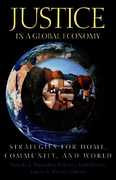Question
Part 1 Changes in macroeconomic indicators can often be of relevance to business decision-making. For instance, changes in macroeconomic performance reflected in indicators can impact
Part 1
Changes in macroeconomic indicators can often be of relevance to business decision-making. For instance, changes in macroeconomic performance reflected in indicators can impact things such as firms profit forecasts, expected sales growth, expansion plans, etc.
Assume you are employed as a business analyst with the large Australian based mining company. Identify and discuss how each of the following macroeconomic issues may be relevant to the firm:
a)A world-wide economic slow-down.
b)Appreciation of the Australian dollar relative to other major currencies.
c)The government abolishes subsidies to the mining industry.
Part 2
Identify key assumption underlying Keynesian and Classical approaches to macroeconomic analysis. In your answer identify how Keynesian and Classical economists differ regarding understanding about the business cycle and how the economy should best be managed?
Part 3
Imagine that the economy is experiencing inflation and that the Reserve Bank of Australia (RBA) decides to implement a contractionary monetary policy or 'tight money' to return inflation to its target level.
a)What type of open market operations (OMOs) will the RBA undertake consistent with a contractionary monetary policy approach?
b)How will the money supply be affected?
c)Explain how the three stages of transmission process from a contractionary monetary policy link a change in interest rates with a change in an economy's equilbrium level of output.
d)Using the IS-LM curve diagram, illustrate the impact of a contractionary monetary policy. Make sure to clearly indicate the new equilibrium position including the interest rate and outputlevel.
Part 4
a)What economic conditions would result in a very steep IS curve? Briefly explain.
b)If an economy was in deep recession what type of demand-side policy would be most effective when the IS curve is very steep?
c)Explain why low levels of economic confidence may hinder the effectiveness of monetary policy?
Part 5
Assume an economy is in recession and the government is considering using fiscal stimulus measures to boost spending, production and employment.
a) Using the IS-LM curve diagram,illustrate the crowding out problem that could occur as a result of increased government spending. Make sure to clearly indicate the new equilibrium position including showing how both the interest rate and level of Y change.
b)Explain how'crowding out' can harmproductivity growth.
c)Explain how the 'crowding out' problem associated with increased government spending can be avoided. In your answer identify any additional policy that is needed.
Part 6
The recent Federal Budget featured significant tax cuts to help stimulate the Australian economy which is currently in recession. Shortly after the announcing the budget, Treasurer Josh Frydenberg announced: "These tax cuts will put more money into people's pockets and that money will be spent across the economy and that money will help create jobs."
With reference to what you have learned about fiscal policy as part of this course, and in light of the current economic situation in Australia discuss the logic behind the Treasures statement. In your answer identify whether or not, or to what extent you agree with the Treasurer and explain why. In your answer draw on relevant evidence and examples as necessary to support your answer.
Part 7
Assume the following information for an economy:
Natural level of output = $190b
Autonomous consumption = 50
Total investment = 16
Government expenditure = 19
Autonomous taxation = 20
Marginal propensity to consume = 0.6
Based on this information answer the following questions:
a)Calculate the actual equilibrium level of output for this economy.
b)Calculate the output ratio for the economy.
c)Using the Phillips Curve illustrate the current approximate position for the economy and identify this as point A.
d)Assume the government increased spending by $5b. Calculate what the new equilibrium level of output will be.
e)As a result of d) indicate how this will likely impact the economy using the Phillips Curve model from c). Label the new position the economy will approximately be at as point B.
f)Discuss whether the government actions in d) are consistent with the objectives of economic stablisation. Include within your discussion reference to what the goals and objectives of economic stabilisation entail.
Part 8
a)What is average labour productivity? Explain how average labour productivity can impact economic growth measured in terms of RGDP per capita.
b)Average labour productivity is presently higher in Australia than it is in China yet during the 21stCentury, China has experienced much higher rates of economic growth compared to Australia.
Explain possible reasons for this drawing on relevant evidence and examples to support your answer.
c)What is meant by diminishing returns to capital? Use a hypothetical example to support your answer.
d)While increasing outplut levels have been a benefit of economic growth, what have been some of the challenges associated with the phenomenon of economic growth?Here consider the broad social and environmental implications that stem from economic growth. In your answer draw on relevant evidence and examples.
Part 9
If deposits in the banking system are $540, while the reserve ratio is 0.2 and the currency to deposit ratio is 0.09, then:
a)Calculate the total demand for high powered money.
b)Calculate the money multiplier.
Step by Step Solution
There are 3 Steps involved in it
Step: 1

Get Instant Access to Expert-Tailored Solutions
See step-by-step solutions with expert insights and AI powered tools for academic success
Step: 2

Step: 3

Ace Your Homework with AI
Get the answers you need in no time with our AI-driven, step-by-step assistance
Get Started


